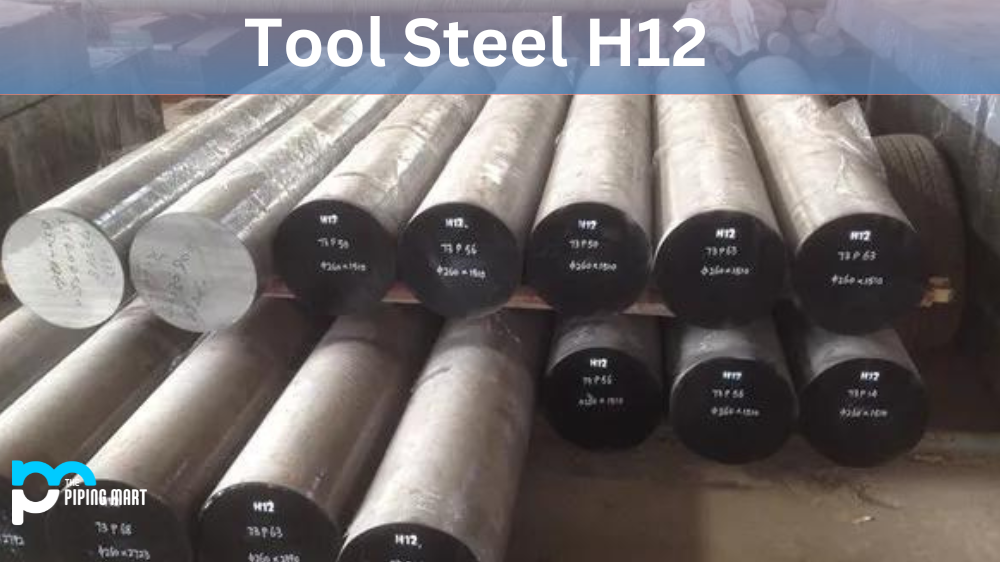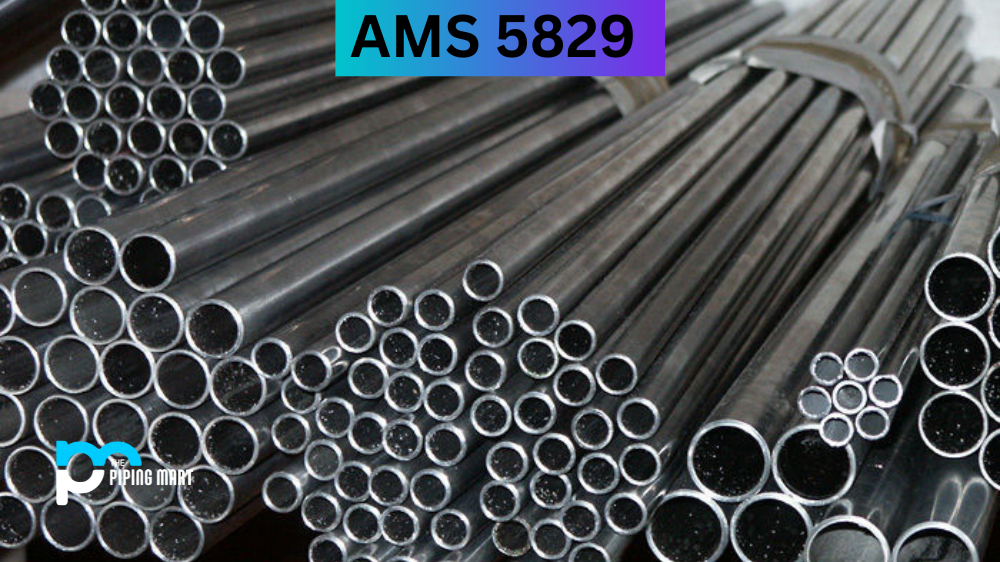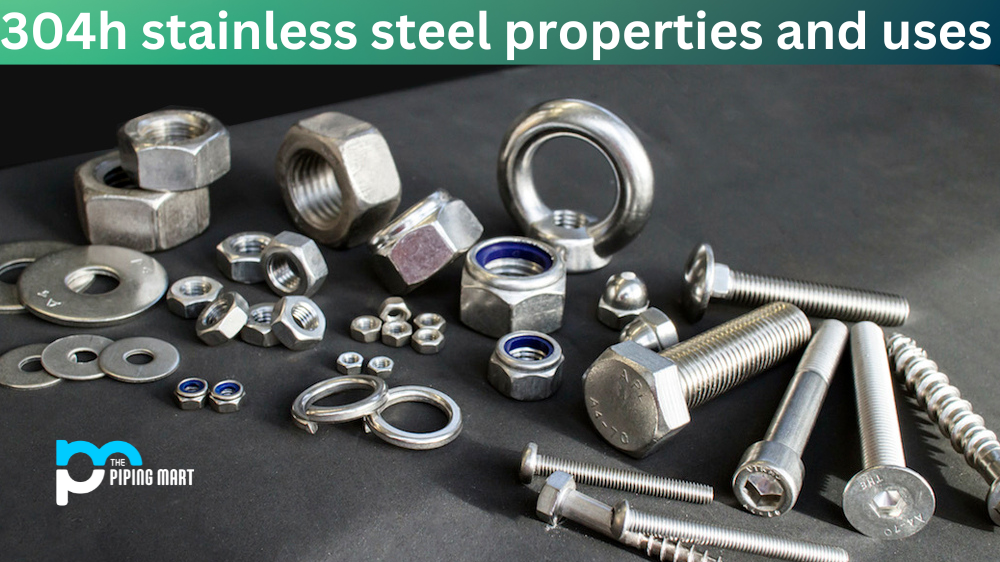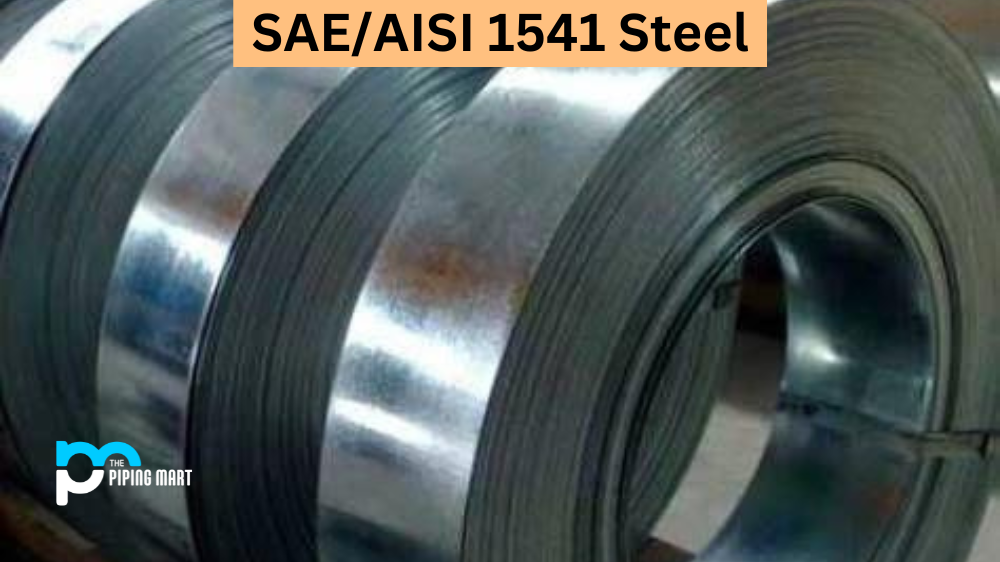Tool steel is an essential material in the manufacturing industry. It is used to create tools and dies capable of withstanding high-stress levels and wear. One type of tool steel that’s especially useful is Tool Steel H12. This blog post will discuss the composition, mechanical properties, physical properties, uses, corrosion resistance, heat resistance, heat treatment, machining and welding of this versatile tool steel.
H12 Composition
Tool Steel H12 is composed mainly of iron (Fe) as well as manganese (Mn), chromium (Cr), molybdenum (Mo), vanadium (V) and tungsten (W). The percentages for each element vary slightly depending on the manufacturer.
| ASTM A681 | C | Mn | P | S | Si | Cr | V | W | Mo | Ni | Cu | Sn | |||||||
| H12/T20812 | 0.30 | 0.40 | 0.20 | 0.60 | 0.03 | 0.03 | 0.80 | 1.25 | 4.75 | 5.50 | 0.20 | 0.50 | 1.00 | 1.70 | 1.25 | 1.75 | … | … | … |
| DIN ISO 4957 | C | Mn | P | S | Si | Cr | V | W | Mo | ||||||||||
| 1.2605/X35CrWMoV5 | 0.32 | 0.40 | 0.20 | 0.50 | 0.03 | 0.02 | 0.80 | 1.20 | 4.75 | 5.50 | 0.20 | 0.50 | 1.10 | 1.60 | 1.25 | 1.60 | … | … | … |
| JIS G4404 | C | Mn | P | S | Si | Cr | V | W | Mo | ||||||||||
| SKD62 | 0.32 | 0.40 | 0.20 | 0.50 | 0.03 | 0.02 | 0.80 | 1.20 | 4.50 | 5.50 | 0.20 | 0.50 | 1.00 | 1.60 | 1.00 | 1.60 | … | … | … |
| BS 4659 | C | Mn | P | S | Si | Cr | V | W | Mo | ||||||||||
| BH12 | 0.30 | 0.40 | … | 0.40 | 0.35 | 0.35 | 0.85 | 1.15 | 4.75 | 5.25 | … | 0.50 | 1.25 | 1.75 | 1.25 | 1.75 | 0.40 | 0.20 | 0.05 |
H12 Mechanical Properties
Steel H12 has excellent hardness and wear resistance due to its high carbon content. Its strength and toughness make it ideal for shock absorption or impact resistance applications. It also has good fatigue strength and creep resistance at elevated temperatures.
- Modulus of elasticity [103 x N/mm2]: 207
- Density [g/cm3]: 7.84
- Thermal conductivity [W/m.K]: 18.9
H12 Physical Properties
This tool steel has a relatively low density compared to other steels due to its high chromium content. It can be hardened by quenching in water or oil followed by tempering at a temperature between 350°F – 500°F (177°C – 260°C).
H12 Thermal Properties
| 20-100oC | 20-200oC | 20-400oC | 20-600oC |
| 9.8 | 11 | 12.1 | 13 |
H12 Equivalent
| Country | USA | German | Japan | British |
| Standard | ASTM A681 | DIN EN ISO 4957 | JIS G4404 | BS 4659 |
| Grades | H12/T20812 | 1.2605/X35CrWMoV5 | SKD62 | BH12 |
Uses
H12 Tool Steel is commonly used in applications such as punches, dies, cold drawing tools, shear blades and forming tools. It can also be used in various automotive components such as valve seats, valve guides and connecting rods due to its excellent corrosion resistance at elevated temperatures.
Corrosion Resistance
This tool steel offers excellent corrosion resistance at both room and elevated temperatures due to its high chromium content. However, it should not be used in highly corrosive environments since it may suffer from pitting or staining if exposed for too long.
Heat Resistance
Tool Steel H12 has good heat resistance thanks to its high chromium content, which provides oxidation protection up to 1600°F (871°C). It can also resist scaling up to 1900°F (1038°C). Heat Treatment: Tool Steel H12 can be hardened by quenching in water or oil followed by tempering at a temperature between 350°F – 500°F (177°C – 260 °C).
Machining
This type of tool steel can be machined with conventional cutting tools but should be done with extreme caution due to its hardness, making it difficult to machine without breaking the device’s cutting edge.
Welding
Welding this type of steel requires preheating before welding to avoid cracking during cooling afterwards. If proper preheating is not done, then cracking may occur during cooling after welding, which would need repair before further use of the welded piece.
Conclusion:
Tool Steel H12 is an incredibly versatile material that offers excellent hardness and wears resistance, good fatigue strength, creep resistance, corrosion resistance, heat resistance, machinability and weldability. It is perfect for applications where shock absorption or impact resistance is needed, such as punches, dies, cold drawing tools, shear blades etc. As always, take necessary precautions when working with this material, like preheating before welding or using appropriate cutting tools when machining. With proper care, this material will serve you well for many years!

Pipingmart is a B2B portal that specializes in metal, industrial and piping items. Additionally, we share the latest information and information about materials, products and various types of grades to assist businesses that are involved in this business.




